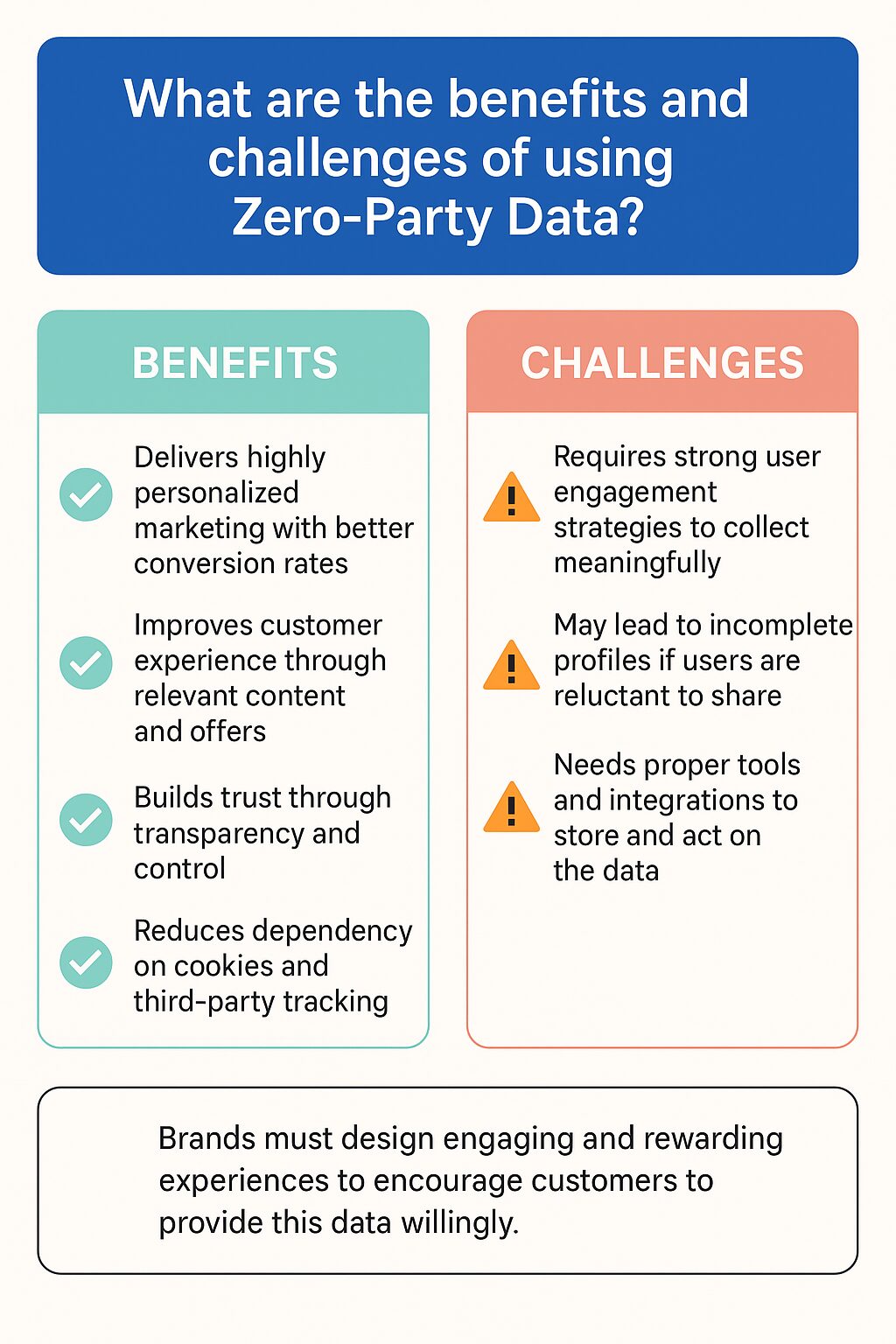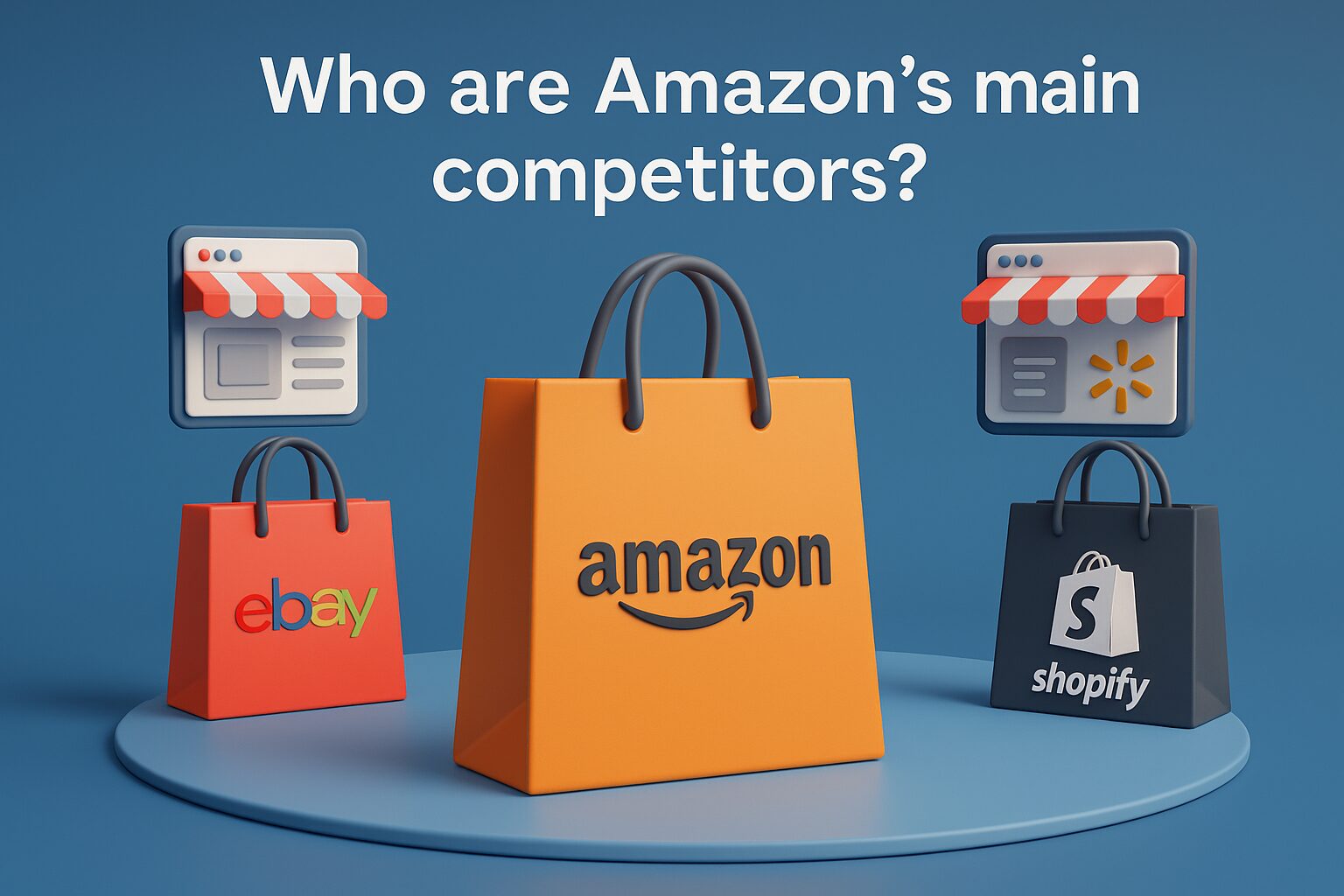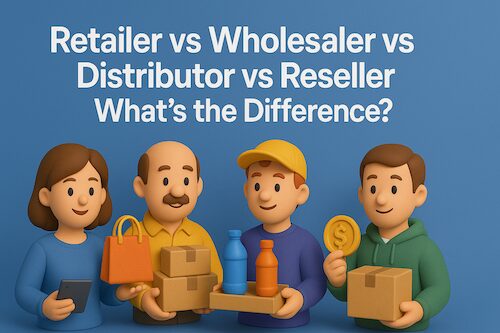What is the meaning of Zero-Party Data?
Zero-party data refers to information that a customer **proactively and intentionally shares** with a brand. This may include preferences, purchase intentions, personal context, or how the individual wants to be recognized and communicated with. Unlike first-party data, which is inferred from user behavior (e.g., browsing or purchase history), zero-party data is explicitly provided by the customer. For example, an online fashion retailer may offer a style quiz asking customers about their size, favorite colors, and preferred styles. The insights gained are considered zero-party data and are highly valuable because they come directly from the customer and reflect their true intent.
Why is Zero-Party Data important for businesses?
Zero-party data is becoming a cornerstone of privacy-first, personalized marketing strategies. With increasing data privacy regulations (like GDPR and CCPA) and the phasing out of third-party cookies, brands are shifting to more transparent and ethical data collection practices. Zero-party data is:
- Consent-based: The customer willingly provides it, reducing privacy concerns.
- Accurate: Unlike inferred data, it reflects direct user intent and preferences.
- Valuable for personalization: Enables brands to tailor recommendations, offers, and communication effectively.
- Trust-building: Encourages a more transparent and interactive relationship with the customer.
It empowers businesses to serve their audience better while staying compliant with evolving data laws.
When is Zero-Party Data typically collected?
Zero-party data is usually collected at specific interaction points where customers are encouraged to share more about themselves. Common scenarios include:
- Onboarding surveys or quizzes (e.g., fitness goals, skincare needs)
- Preference centers (e.g., email frequency, content types)
- Loyalty programs (e.g., favorite products, rewards)
- Contests, polls, or interactive campaigns
It’s most effective when the value exchange is clear—customers are more willing to share personal details when they know it leads to better recommendations, discounts, or user experiences.
How is Zero-Party Data different from other types of data?
Here’s a quick breakdown of how zero-party data compares with other data types:
- Zero-party data: Intentionally shared by the customer (e.g., “I like organic products”).
- First-party data: Collected through user interactions (e.g., purchase history, clicks).
- Second-party data: Another organization’s first-party data shared via partnership.
- Third-party data: Aggregated from multiple sources without direct customer interaction (e.g., bought from data brokers).
Zero-party data is unique because it’s voluntary, not inferred, and thus highly reliable for tailoring customer journeys.
What are the benefits and challenges of using Zero-Party Data?
Benefits:
- Delivers highly personalized marketing with better conversion rates
- Improves customer experience through relevant content and offers
- Builds trust through transparency and control
- Reduces dependency on cookies and third-party tracking
Challenges:
- Requires strong user engagement strategies to collect meaningfully
- May lead to incomplete profiles if users are reluctant to share
- Needs proper tools and integrations to store and act on the data
Brands must design engaging and rewarding experiences to encourage customers to provide this data willingly.

Can you give an example of Zero-Party Data in use?
Let’s say a skincare brand launches a personalized product matching tool on its website. Users are asked to answer a series of questions: “Do you have oily, dry, or combination skin?”, “Do you have any skin concerns such as acne or dark spots?”, and “What is your daily skincare routine like?” This voluntarily submitted information is zero-party data. The brand uses it to recommend specific products and send targeted emails featuring tips for oily skin or promotions on acne solutions. Because the data is user-submitted, the marketing is more relevant and leads to higher satisfaction and loyalty.








